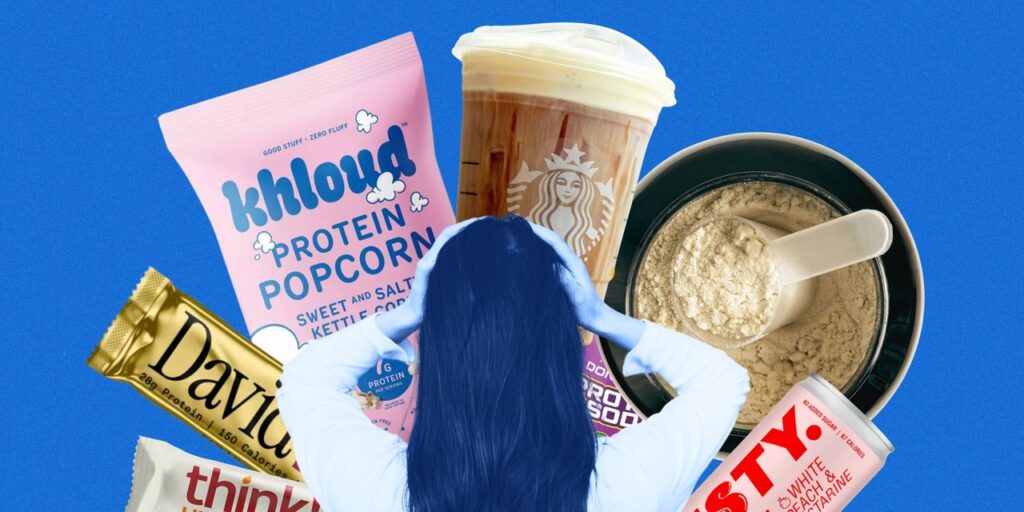If nutrition is a popularity contest, one macro has emerged victorious. Driven by cultural pressure and disseminated via the internet, protein hysteria has reached a fever pitch. Per The Economist, Google searches for “high protein diet” hit an all-time high in January 2025—a clear indicator of our nutritional priorities.
While protein is of course important—it’s necessary for growth and development, muscle and bone metabolism, and a ton of other critical functions—experts say its current star power is concerning for a few reasons. Prioritizing one specific nutrient can come at the expense of the others, and may shift attention away from the dietary practice with the largest health payoff: eating balanced meals rich in whole foods.
Oftentimes, a high-protein diet “can displace our intake of things like carbohydrates or fats or other micronutrients,” such as vitamins and minerals, Janice Dada, MPH, RDN, a certified intuitive eating counselor based in California, tells SELF. And contrary to what you might hear online, the vast majority of people don’t actually need more protein, thanks to the already-omnipresent emphasis on protein-rich animal products like meat and dairy in the Western diet. “Unfortunately, this is a widespread misunderstanding that can actually harm people,” Dariush Mozaffarian, MD, MPH, DrPH, a cardiologist, public health scientist, and the director of the Food Is Medicine Institute at Tufts University, tells SELF.
“Widespread” is right: Even if you personally aren’t all that tuned into the nutrition conversation, you’ve probably noticed the high-protein hype slowly but surely seeping into your consciousness, from the addition of protein foam to the Starbucks menu to the presence of Khloe Kardashian’s Khloud protein popcorn on supermarket shelves. Here’s how protein went from a basic macro to a bona fide cultural phenomenon—and how that’s ushered in a radical change in our eating habits.
Where the protein obsession began
While protein has been a point of fascination among the public for a while—in fact, the first protein powders actually “came on the market in the fifties,” Dada says—the spotlight really intensified in the late twentieth century as a side effect of another cultural trend: thinness. Starting in the 1980s, a boom in low-carb and low-fat diets—like Zone, Dukan, Atkins, and South Beach—steered people toward protein because it was the only “acceptable” macro left. “The poor public…. They’re sort of grasping at the last nutrient standing,” Dr. Mozaffarian says.


